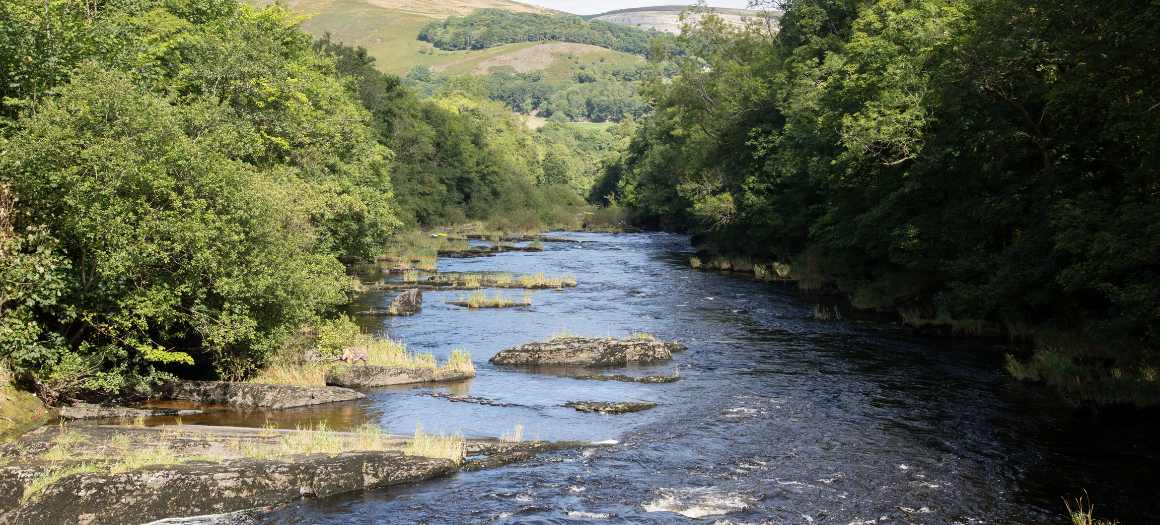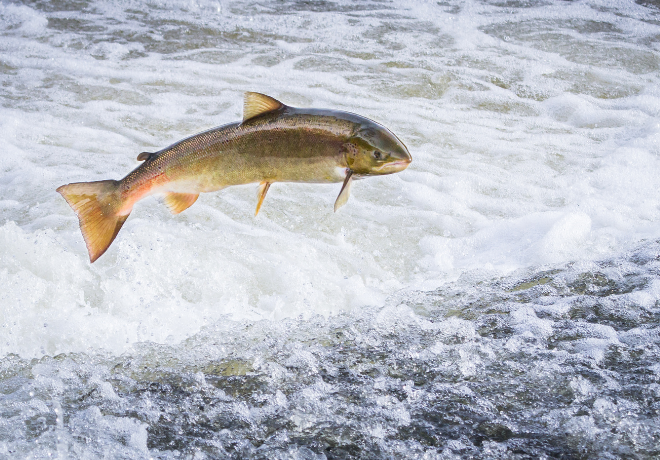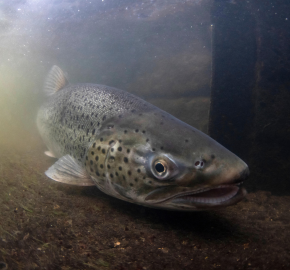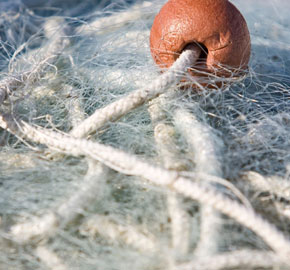Caught in a tangled net?

In 2022, WildFish investigated the impact of shore-based nets in Wales on protected salmonids. In this post, Guy Linley-Adams reveals our findings – and the legal action that followed.
At the start of this investigation, there were believed to be about fifty shore-based nets operated in Wales. These were fixed, stake, set or anchored gill nets, used in the intertidal zone. The nets are set at low tide and rise with the incoming tide where they are suspended in the water by a floated headline.
Shore-based nets pose a by-catch risk to non-target species, particularly migratory fish including salmon, allis shad, twaite shad, marine lamprey (all features of Special Areas of Conservation in Wales) and sea trout.
From our initial findings, it was worrying that no one seemed to know for sure what was being caught and killed.

Atlantic salmon are among one of several migratory species that are at risk of by-catch from shore-based netting in Wales. ©GettyImages
Regulation of shore-based nets
The nets were not subject to any sort of permitting system and the Welsh Government didn’t seem to know how many there were. More importantly, they seemed unaware of the species potentially being killed as by-catch by these fish nets.
The nets were (and continue for now) to operate under old Sea Fisheries Committee byelaws dating back to the previous century!
There was certainly no evidence that the nets had ever been looked at in terms of the special legal protection given to Atlantic salmon. Salmon are found in a number of Welsh rivers including the River Gwyrfai (Afon Gwyrfai), River Teifi (Afon Teifi), River Dee, River Usk (Afon Wysg) and the River Wye (Afon Gwy) – all are designated Special Areas for Conservation (SAC).
Wildfish lawyers take on the case
Upon taking up the case, we challenged Welsh Ministers over their lack of control. At first they denied they had to do anything, but we pushed and threatened legal action.
In early 2023, Welsh Ministers relented and “requested NRW, as the statutory nature conservation body for Wales, to review the effectiveness of the current provisions regarding the potential impact shore netting has on those SAC rivers, and identify any evidence gaps”.
Unsurprisingly, the Natural Resources Wales (NRW) review was delayed, and delayed some more, and then delayed again.
Eventually, it surfaced.
Findings of the NRW Report
In its report, NRW concluded that: “The level of protection provided would have been considered reasonable when they [the old SFC byelaws] were made, given the status of stock at the time and the working assumption that salmon, in particular, were thought most at risk in waters adjacent to their natal rivers. However, there is reduced confidence in reaching the same conclusions now due to:
- The declining conservation status of salmon (and in some cases sea trout), highlighting the need to provide enhanced protection around the coast of Wales.
- Salmon migration is not direct. Salmon and sea trout have been intercepted by shore nets outside the byelaw exclusion areas, as evidenced in recent enforcement cases undertaken by NRW
- There is minimal fishery data on which to assess the impact of exclusion zones and legal net fisheries.
- Resource pressures and the nature of these fisheries often means compliance activity on these net fisheries is limited.
There is little assurance that the risks to salmon and sea trout in the marine are fully understood or managed”.
To be clear NRW highlighted that there was “reduced confidence” in the level of protection afforded to by-catch species, especially declining Atlantic salmon.
In plain terms, that means the Welsh Government was told it couldn’t be sure that legally protected salmon from SAC rivers were actually being safeguarded from these nets.
Welsh Government concludes action is needed
Following publication of the NRW review, a long-winded process of arguing with the Welsh Government ensued. We threatened renewed legal action and even provided our Counsel’s advice to Welsh Ministers to keep matters moving forward.
We are glad to report there is – at last – some progress.
Just before Christmas, we received the latest response from the Welsh Government. As a result of the pressure we’ve built over the last three years, the Welsh Government has finally done its own review and concluded it needs to act.
We’ll be keeping a close eye on the next steps
As a starting point, the Welsh Government sought the support of the Wales Sea Bass Advisory Group, not only to improve the control of the nets to protect bass populations, but also to deal with by-catch of protected salmonids.
There is now a call for evidence (issued on 20 January 2025), asking netsmen for details of their netting activities – responses are due by 28 February.
It seems very likely indeed that, once the evidence-gathering is over, the preferred option will be to introduce changes to netting through legislation. To create a permitting system for shore-based nets, that can, among other issues, properly control bycatch of migratory fish.
Of course, there will need to be public consultation before any changes can be made which will take more time – time that perhaps vulnerable populations, like the Atlantic salmon, can ill afford.
However, fingers crossed, we are now well on the way to greater protection for Welsh salmonids that will prevent them being killed in large numbers in Welsh coastal nets.
As you’d expect, we’ll be keeping a close eye on what happens next.g




Bass cannot be taken between 31st January and 1st April 2025. My understanding that bass cannot be taken in fixed or drift nets. They are also protected by the bass nursery zones, many of which are located in estuaries.
Thanks for this informative article. More good work Guy! Keep pushing…
Well done getting this far. Given that present byelaw legislation now prevents the taking of all salmon and seatrout>60cm given the types of shore employed all such fish caught will most probably be dead, and so the nets are engines for the illegal catch of salmonids and should be closed.
Scandalous this should have remained hidden. Even coracle heritage netting has to comply with tthe C&R regulations.